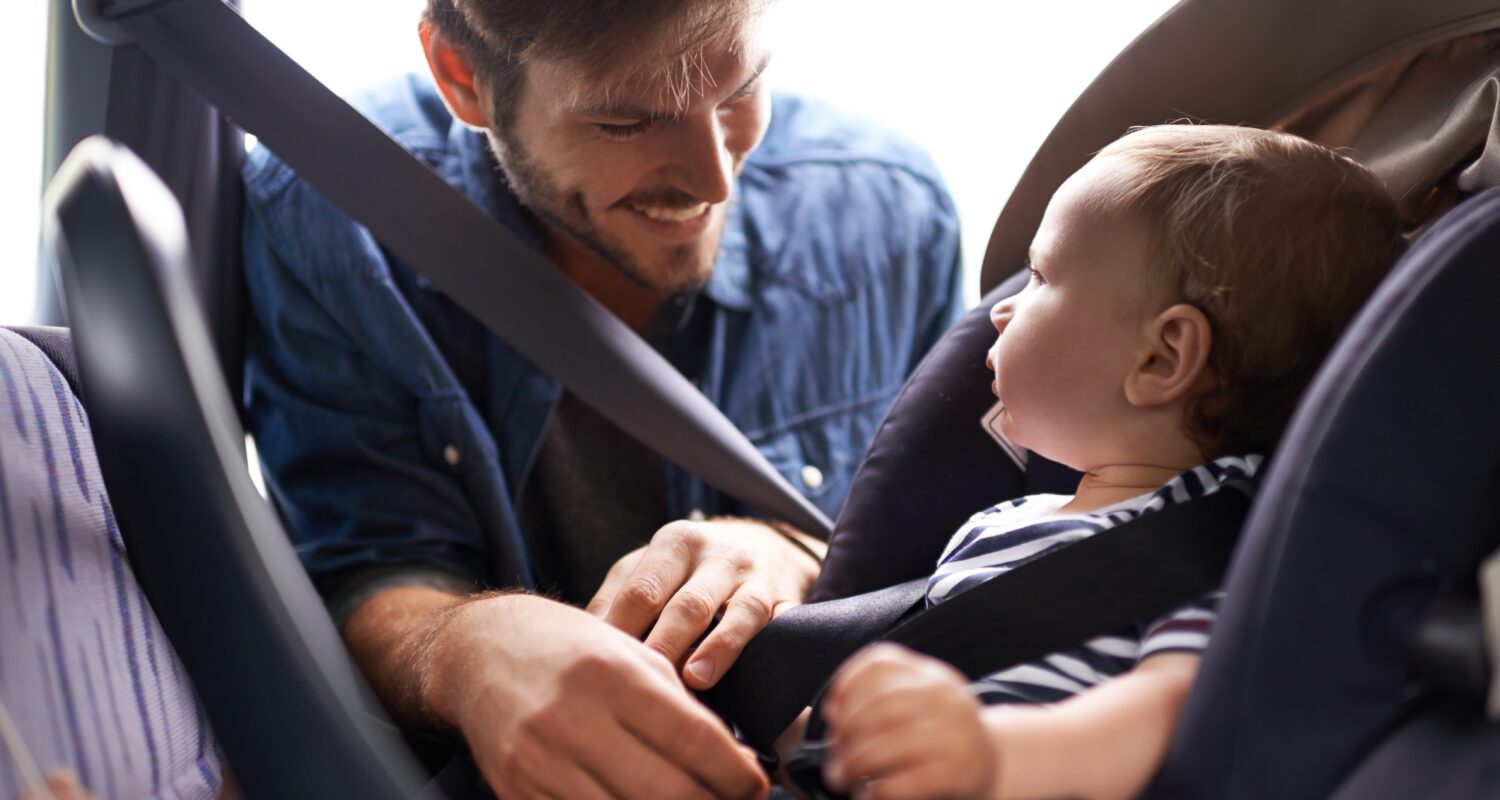 Menu
Menu
- Fenstermaker Insights
- Engineering
- The Importance of Traffic Safety
Fenstermaker Insights
The Importance of Traffic Safety
By Kimberly McDaniel, P.E., PTOE, PTP – February 22, 2019

A young father strapping his baby into a car seathttp://195.154.178.81/DATA/i_collage/pi/shoots/783361.jpg

As a traffic engineer, in many studies, we are tasked with considering the safety of an intersection or a corridor. To do this, we examine the crash history of the project area. All law enforcement agencies – local, sheriff, and state police – maintain databases of all crashes they respond to, including copies of the individual reports. I will never forget the first time I had to read a fatal crash report.
I was working in the Detroit area at the time, and the freeway system there is depressed, meaning it is below the level of the surface street network (not something we see in Louisiana). Because of this setup, there are walls along the outside lanes of the roadway. In this particular crash, a woman was driving a minivan when she hit a patch of black ice causing her vehicle to spin uncontrolled, hitting the wall several times before coming to a rest. She had five children under the age of six in the vehicle. Not a single child was properly restrained in the vehicle. No car seats. No seatbelt use. Nothing. The driver (and mother of the children) was wearing her seatbelt, and she walked away injury-free. Unfortunately, the same could not be said for her children. They were transferred to a trauma center via helicopter, all with life-threatening injuries. Sadly, not all children recovered. That day, a family lost four of their five children.
Although I am thankful I did not have to witness this horrific incident in-person, reading the officer’s vivid descriptions of the crash were enough. Something like that sticks to your bones and stays with you. From that day forward, I had a new appreciation for the importance of safety when traveling.
Traffic engineers evaluate past crashes to determine any physical roadway features that could contribute to the cause of the crashes and to identify any potential ways to prevent future crashes from occurring. Sometimes this can be as simple as installing new warning signs alerting drivers to a particular hazard. Or it can be as complex as reconstructing and redesigning an intersection. But physical changes to the roadway facility can only do so much.
Roadway users – both drivers and passengers – bear a striking charge to stay alert, use vehicular safety features, and obey the law. Distracted driving is so much more than driving while talking on a phone. It also includes texting, eating (I once was stopped next to a man eating a plate full of pancakes while driving – true story!), putting on makeup, fixing your hair, tending to backseat passengers, adjusting the radio settings, using in-dash systems like navigation, and more! Be sure all children are in properly-installed age- and size-appropriate restraints; if cost is a factor, there are dozens of organizations who will provide and install the restraints at no charge! Pay attention to your surroundings. Use a blinker, even to signal lane changes. Pay extra attention in construction zones. Obey the speed limit. And, by all means, please do not drive distracted!
I have two beautiful children. I want to go home safely every day to see them. And when they are in the car with me, it’s my job to see that they make it home safely too! Whether a driver or a passenger, safety is YOUR responsibility!
Related Capabilities
- Markets
- Services
Your company’s success is our business
Discover our industry-leading products and service that our customers have been trusting in for decades. Whatever your need, we’re here.